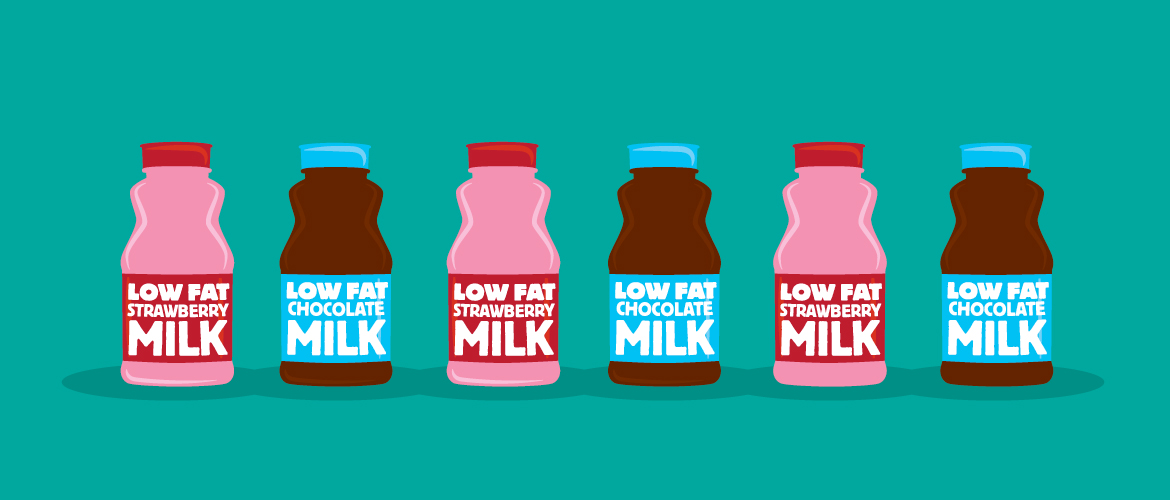As a registered dietitian and an avid runner, chocolate milk is my refueling beverage of choice! Chocolate milk contains both protein to help repair and build muscles and carbohydrate to help refuel energy stores. A 2007 study in The American Journal of Clinical Nutrition reported that consuming milk-based protein immediately after exercise promoted building muscle. At the same time, consuming carbohydrate within 15 minutes after physical activity causes energy stores to increase by 300%. This allows for less fatigue and a faster recovery time, something all athletes and gym goers should love to hear!
Benefits of Flavored Milk
- Milk has been shown as an excellent way to rehydrate and replace electrolytes such as calcium, potassium and magnesium.
- Most of us need more calcium in our diet.
- Despite the fact that each glass of milk contributes 300mg (30% Daily Value) of calcium, many Americans are falling short.
- Most Americans are only consuming two servings of dairy each day whereas the 2010 Dietary Guidelines suggest at least 3 servings are needed every day.
- Flavored milk, either low fat or fat free, is great tasting and a good option for those needing to increase their dairy intake.
- Whether flavored or not, milk offers 9 essential nutrients and is especially beneficial to children for strong bone development.
Some of my clients ask about lactose intolerance impeding their ability to drink milk after workout. Lactose intolerance is less common in adults than people think, and children rarely have the condition.
Fun Facts about Lactose Intolerance
- Lactose intolerance simply means that your body doesn’t break down lactose, or naturally occurring milk sugar.
- Lactose intolerant people can often tolerate chocolate milk better than plain milk, and most can comfortably drink 2 cups of milk each day when consumed with meals, or they may prefer to choose lactose-free milk.
- It is important to obtain adequate dairy intake and if flavored milk is a way to increase consumption to recommended levels, then enjoy! The American Dietetic Association states that adding a limited amount of nutritive sweetener to a nutrient-rich food to increase palatability is acceptable.
Emerging research shows that drinking milk after a workout can be as effective as some sports drinks in helping the body refuel, recover and rehydrate from exercise. Whether plain or flavored, milk can be the perfect choice!



